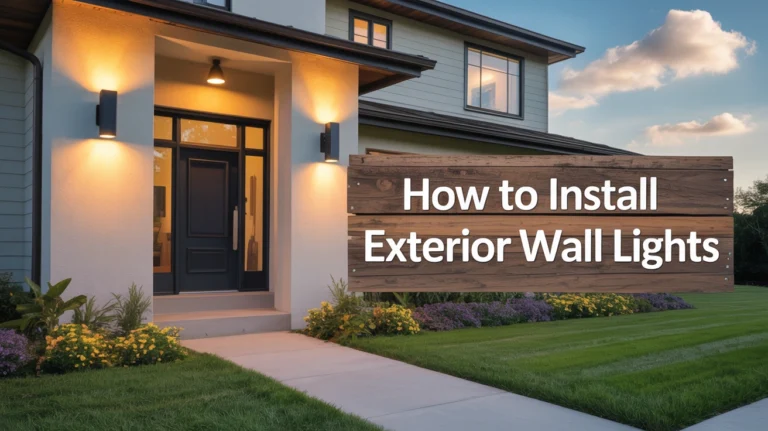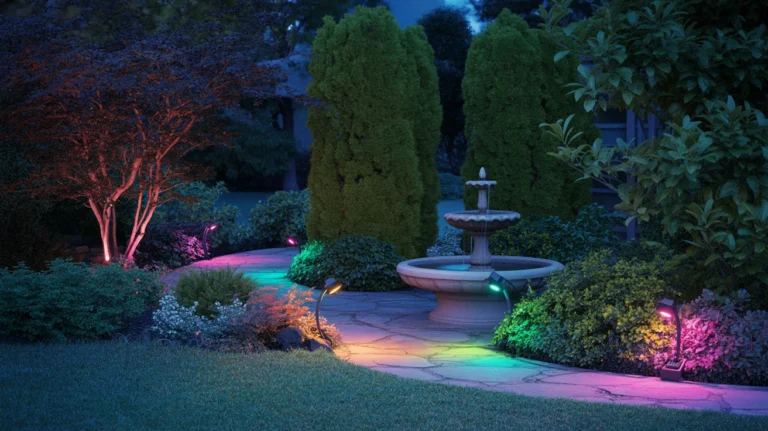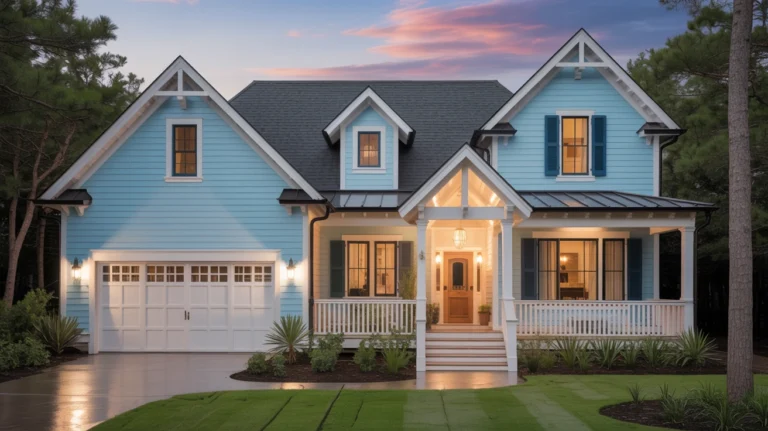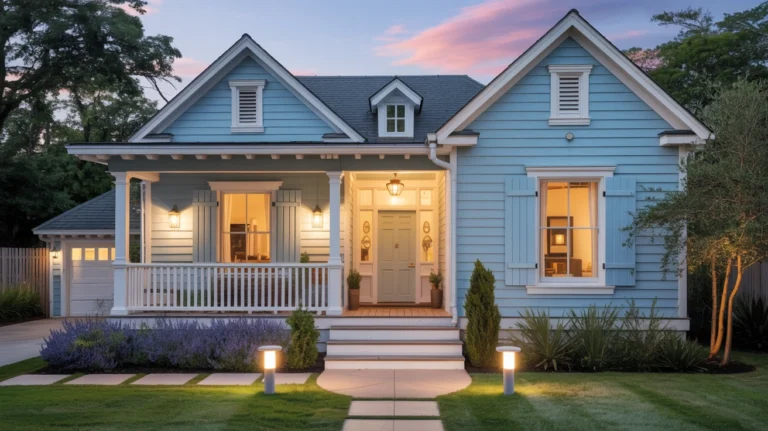How to Choose Energy-Efficient Exterior Light Fixtures
Energy-efficient exterior light fixtures reduce electricity costs, enhance curb appeal, and improve safety for front porches, patios, pathways, and garages while minimizing environmental impact. In 2025, homeowners prioritize LED, solar, and smart lighting for sustainability and performance. This guide provides practical steps to select energy-efficient outdoor fixtures, featuring insights from brands like Philips Hue, Amazon Basics, and Leonlite to illuminate your dream home economically.
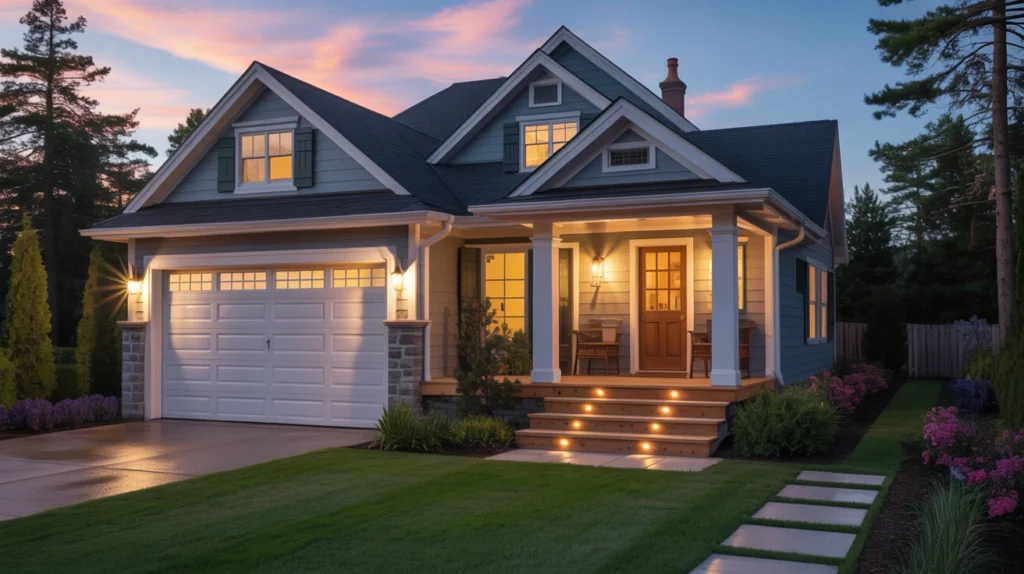
Why Choose Energy-Efficient Exterior Light Fixtures?
- Cost Savings: Efficient fixtures like LEDs save ~$10–$16/year per fixture vs. incandescents (10W vs. 60W, 6 hours/day, $0.15/kWh).
- Environmental Impact: Lower energy use reduces carbon footprint; solar eliminates grid reliance.
- Durability: Long-lasting LEDs (25,000–50,000 hours) and weather-resistant designs reduce replacements.
- Enhanced Functionality: Smart features and sensors optimize energy use while maintaining security and ambiance.
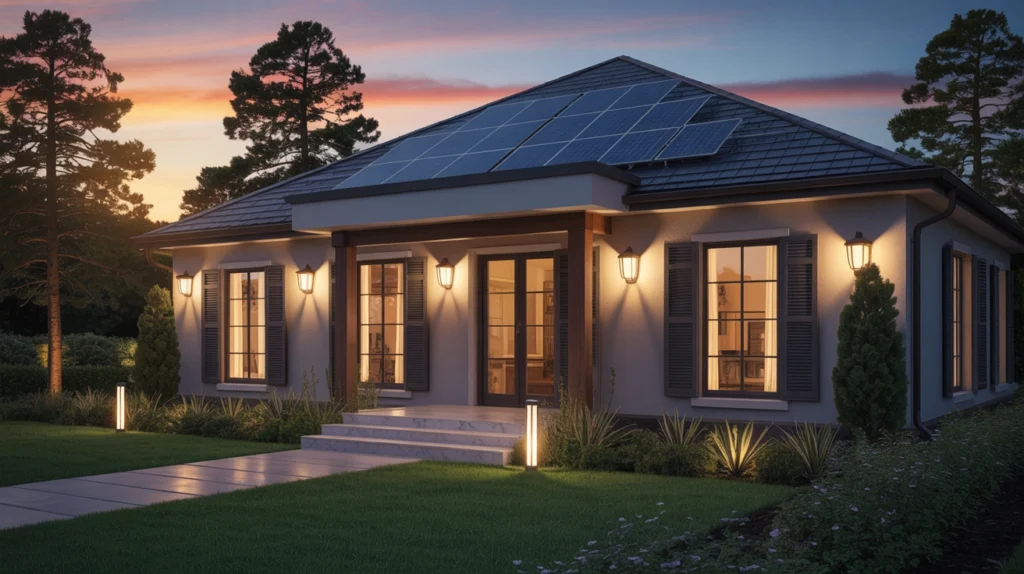
Steps to Choose Energy-Efficient Exterior Light Fixtures
1. Opt for LED Technology
LEDs (Light Emitting Diodes) are the most energy-efficient lighting option, using 60–80% less power than incandescents and 20–40% less than CFLs.
- Why It’s Efficient: A 10W LED produces ~800 lumens, equivalent to a 60W incandescent, saving ~$16.42/year per fixture (6 hours/day, $0.15/kWh).
- Features to Look For:
- Energy Star Certification: Ensures high efficiency and quality.
- Lifespan: 25,000–50,000 hours (~10–20 years at 6 hours/day).
- Dimmable Options: Reduces power when full brightness isn’t needed.
- Example: Kichler Crosby Wall Sconce (~$100, Home Depot, 10W, 440 lumens) for entryways.
- Tip: Check lumen output (100–400 for accents, 400–800 for general, 800–2000 for security) to match purpose.
- Customer Quote: “Our LED sconces cut our porch bill and look great on our light gray house!” – Emily T., Seattle, WA.
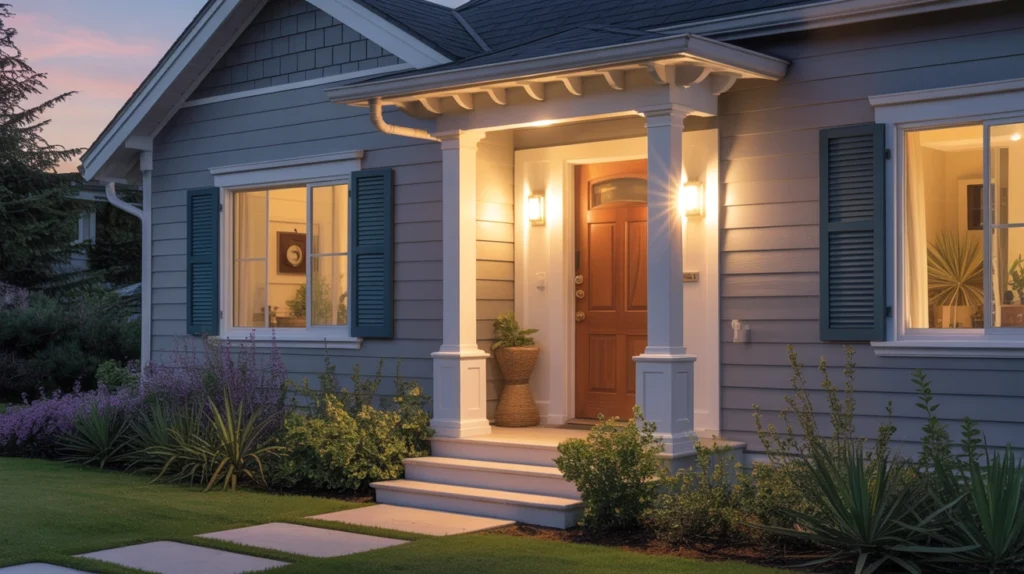
2. Consider Solar-Powered Fixtures
Solar lights use sunlight to power LEDs, eliminating electricity costs and wiring expenses.
- Why It’s Efficient: Zero grid power; a 10W solar LED saves ~$3.29/year vs. a grid-powered LED (6 hours/day, $0.15/kWh).
- Features to Look For:
- Monocrystalline Panels: Higher efficiency (15–20%) than polycrystalline.
- Battery Capacity: 600–2000mAh (lithium-ion preferred) for 8–12 hours runtime.
- IP65/IP67 Rating: Ensures weather resistance.
- Example: Linkind StarRay Solar Spotlight (~$30, Amazon, 7W, 400 lumens) for pathways or facades.
- Tip: Ensure south-facing placement with 6–8 hours of sunlight; clean panels monthly.
- Customer Quote: “Solar spotlights save money and brighten our sage green driveway!” – Lisa M., Wilmington, NC.
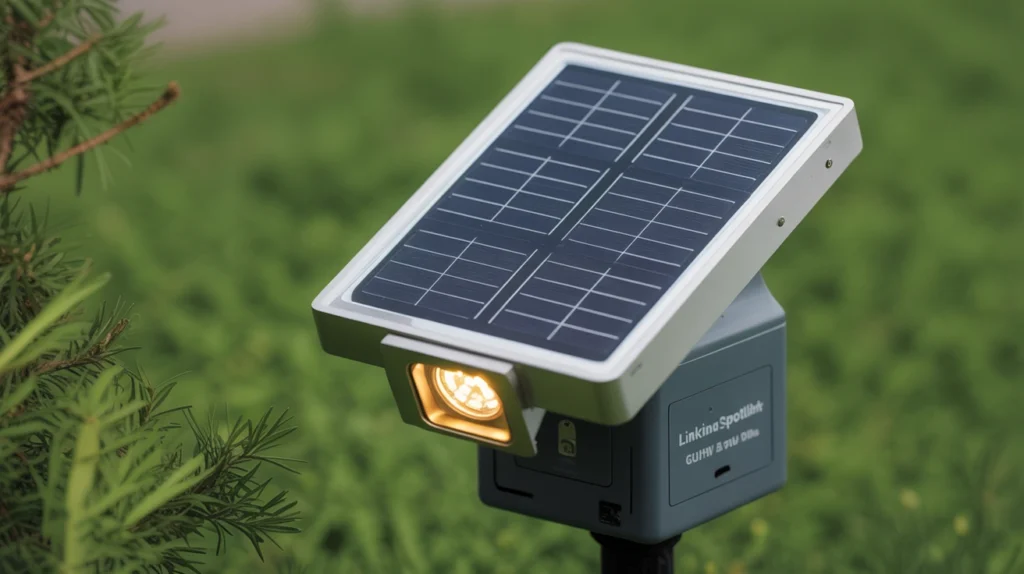
3. Select Fixtures with Smart Controls
Smart lighting integrates motion sensors, dusk-to-dawn photocells, or app-based controls to minimize energy waste.
- Why It’s Efficient: Motion sensors reduce runtime by 50% (~$1.65/year saved per 10W fixture); scheduling prevents daytime operation.
- Features to Look For:
- Motion Sensors: 10–33 ft range, adjustable duration (30 seconds–5 minutes).
- Photocell Sensors: Auto on/off at dusk/dawn.
- Connectivity: Wi-Fi, Zigbee, or Bluetooth with Alexa, Google Home, or Matter support.
- Dimmable: Lowers power for ambiance (e.g., 5W vs. 10W saves ~$1.65/year).
- Example: Philips Hue Econic Smart Wall Light (~$180, Amazon, 15W, 1150 lumens) with Zigbee and motion sensor add-on.
- Tip: Use apps to schedule lights (e.g., off at midnight) or sync with Ring cameras for security.
- Customer Quote: “Smart Hue lights save energy and make our white house glow!” – Tom R., Miami, FL.
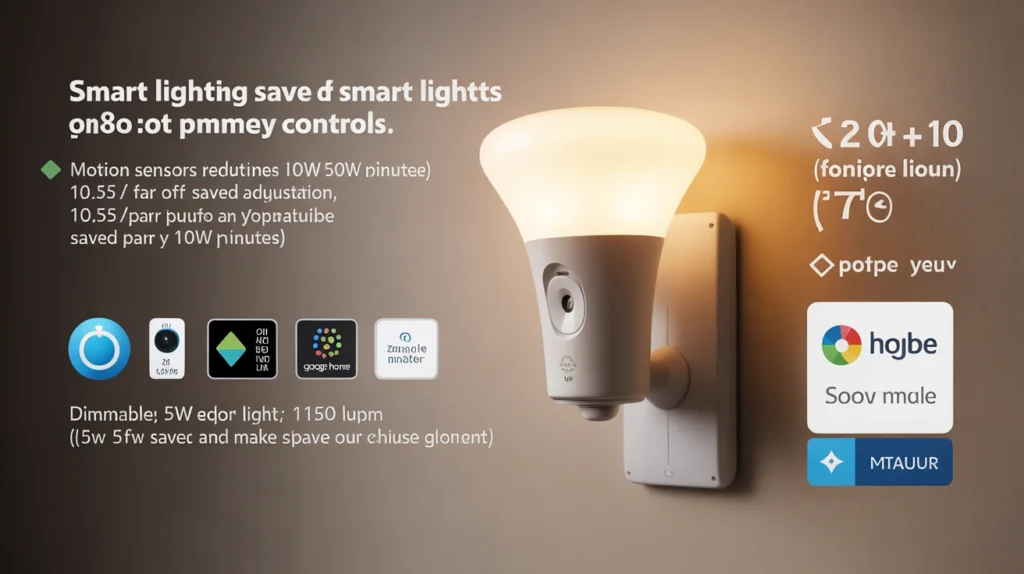
4. Choose Weather-Resistant, Durable Materials
Durable fixtures maintain efficiency by resisting corrosion and reducing replacements, especially in coastal or humid climates.
- Why It’s Efficient: Long-lasting fixtures avoid energy-intensive manufacturing and disposal; IP65/IP66 ratings ensure performance in rain/snow.
- Features to Look For:
- Materials: Brass, aluminum, stainless steel, or powder-coated finishes.
- IP Rating: IP65 (dust-tight, water jets) or IP66 (heavy seas) for harsh weather.
- Sealed Design: Prevents water ingress to protect LEDs.
- Example: Hinkley Harbor Wall Sconce (~$140, Home Depot, 10W, IP65) for coastal homes.
- Tip: Apply marine-grade caulk during installation to enhance weatherproofing.
- Customer Quote: “Our brass sconces last years on our light blue coastal home!” – Sarah M., Raleigh, NC.
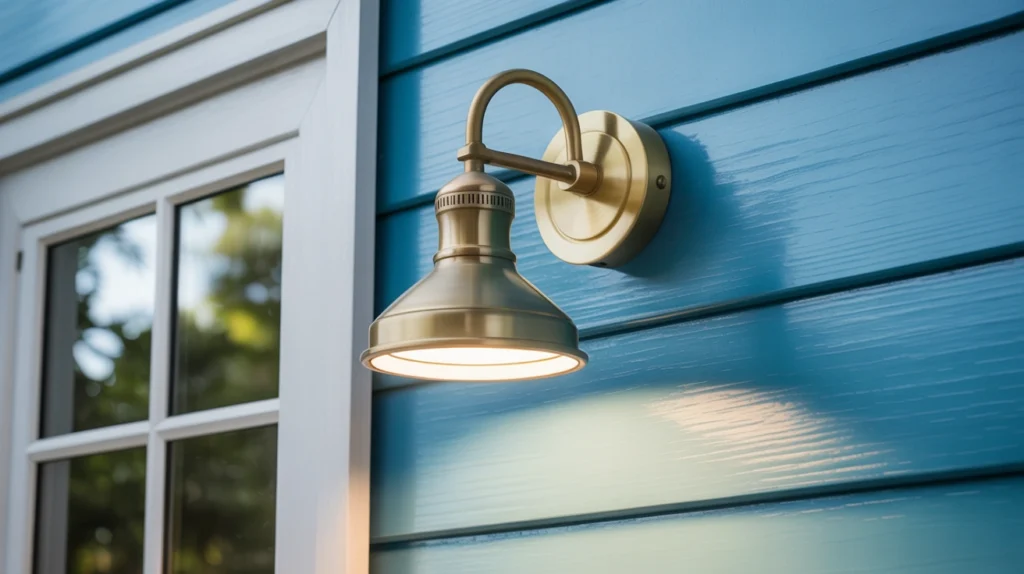
5. Match Light Output to Purpose
Select fixtures with appropriate lumen output and color temperature to avoid over-illumination, which wastes energy.
- Why It’s Efficient: A 5W LED (200 lumens) for pathways vs. a 10W LED (800 lumens) saves ~$1.65/year per fixture.
- Lumen Guidelines:
- 100–200 Lumens: Decorative pathways or landscapes.
- 400–800 Lumens: Entryways or porches.
- 800–2000 Lumens: Security for garages or driveways.
- Color Temperature:
- Warm White (2700K–3000K): Cozy ambiance for patios or white exteriors.
- Neutral/Cool White (3500K–5000K): Bright visibility for security or gray facades.
- Example: Amazon Basics Solar Pathway Light (8-Pack) (~$40, Amazon, 10 lumens, 3000K) for walkways.
- Tip: Test fixtures at night with paint swatches to ensure aesthetic fit.
- Customer Quote: “Low-lumen solar lights save power on our beige path!” – Mark T., Central Iowa.
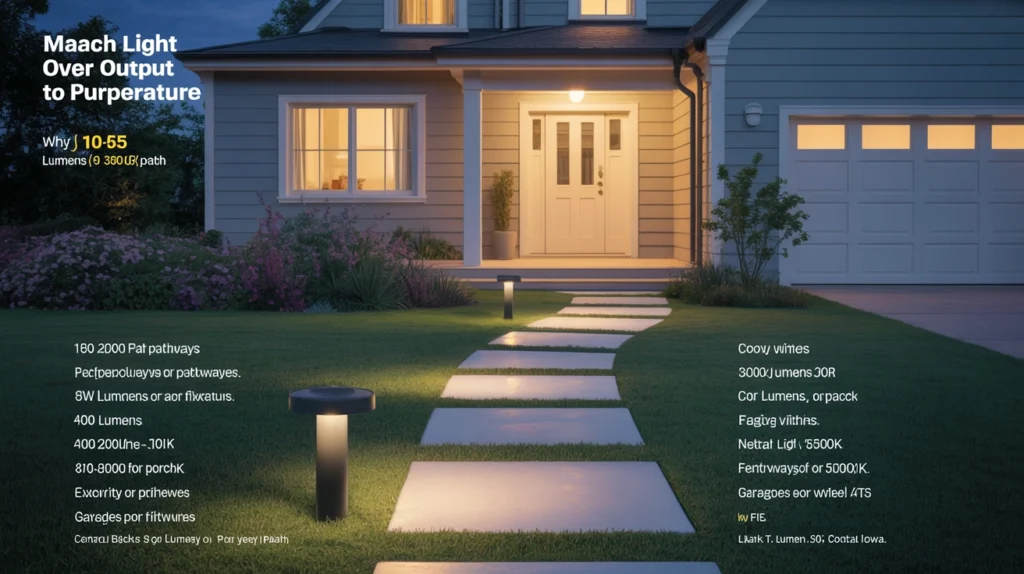
6. Prioritize Motion and Photocell Sensors
Sensors reduce unnecessary runtime, enhancing efficiency without compromising functionality.
- Why It’s Efficient: Motion sensors cut runtime by 50% ($1.65/year saved per 10W fixture); photocells prevent daytime use (~$0.50–$1/year saved).
- Features to Look For:
- Adjustable Sensitivity: Avoids triggers from pets or wind.
- Timer Settings: 30 seconds–5 minutes for motion; auto-off at dawn for photocells.
- Example: Leonlite LED Motion Sensor Floodlight (~$60, Amazon, 20W, 1800 lumens, IP65) for security.
- Tip: Position sensors away from heat sources (e.g., HVAC vents) to prevent false activations.
- Customer Quote: “Motion floodlights save energy and secure our navy house!” – Claire W., Denver, CO.
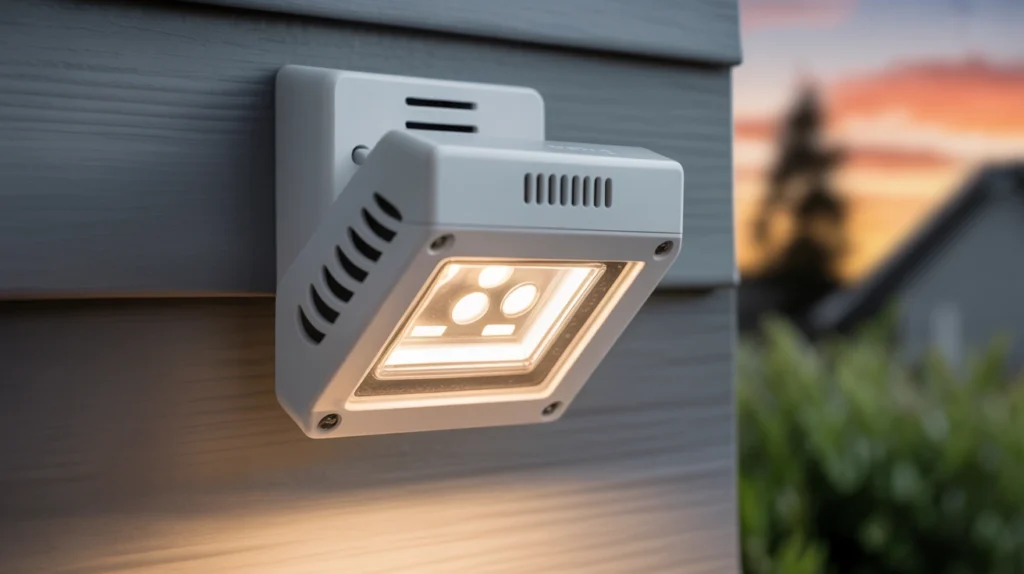
7. Look for Rebates and Incentives
Utility programs and government incentives offset costs for energy-efficient fixtures, shortening payback periods.
- Why It’s Efficient: Rebates ($2–$20/fixture) reduce upfront costs; Energy Star fixtures qualify for most programs.
- Where to Find:
- DSIRE Database: Lists state-specific incentives.
- Utility Websites: Offer $5–$20 off LED or solar fixtures.
- Energy Star Partners: Provide discounts or tax credits.
- Example: Amazon Basics LED Wall Sconce (~$40, Amazon) may qualify for $10 rebates.
- Tip: Check eligibility before purchasing; submit receipts promptly.
- Customer Quote: “Rebates made our LED lanterns cheaper for our light blue home!” – John P., Miami, FL.
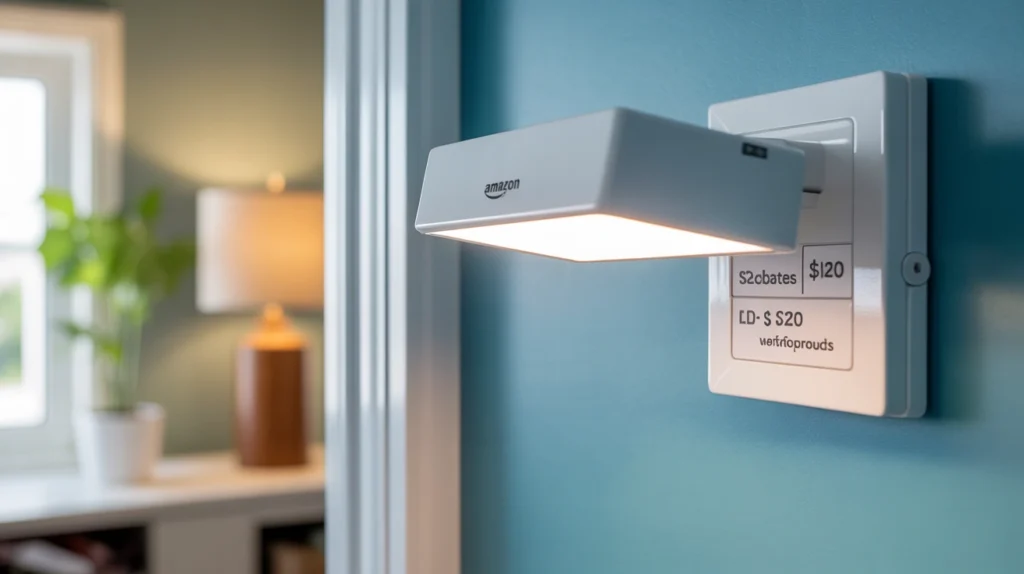
8. Evaluate Fixture Design for Efficiency
Efficient designs direct light where needed, reducing waste and the need for extra fixtures.
- Why It’s Efficient: Focused beams (e.g., up/down sconces) cover more area with less power; fewer fixtures save ~$3.29/year each.
- Features to Look For:
- Shielded Lenses: Prevent light pollution and glare.
- Adjustable Heads: Direct light to specific areas (e.g., spotlights).
- Reflective Interiors: Maximize lumen output.
- Example: Progress Lighting Cylinder Wall Light (~$100, Wayfair, 10W, 1200 lumens) for facades.
- Tip: Use dark sky-compliant fixtures to minimize upward light waste.
- Customer Quote: “Cylinder sconces focus light perfectly on our gray exterior!” – Emily T., Seattle, WA.
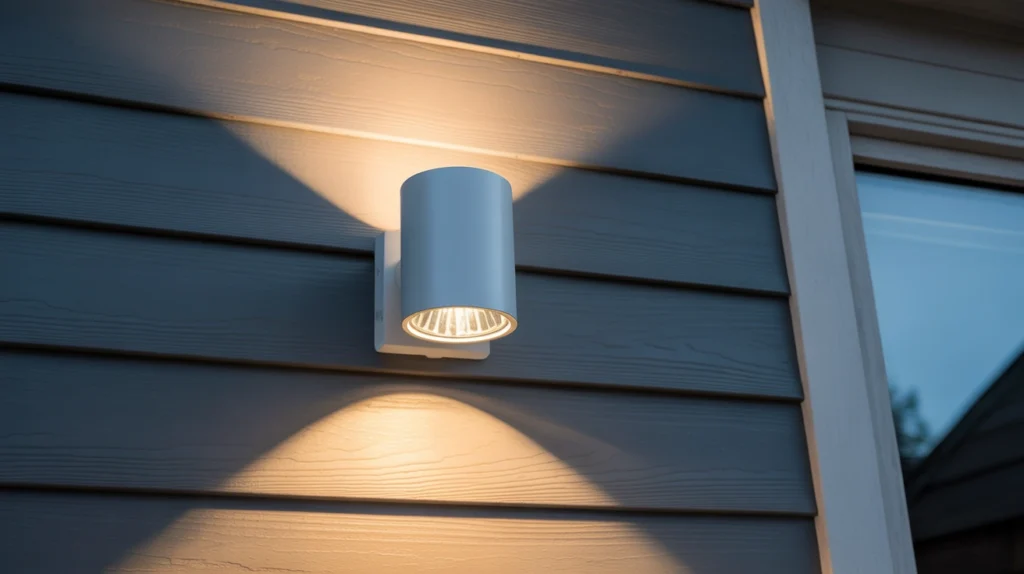
Additional Considerations
- Aesthetic Compatibility: Match finishes (matte black, brass, nickel) and styles (modern, coastal) to light blue, white, or navy exteriors. Example: Philips Hue Inara (~$130, Amazon) for modern homes.
- Layer Lighting: Combine ambient (sconces), task (floodlights), and accent (spotlights) for balanced coverage, reducing over-illumination.
- Test Before Committing: Use temporary setups or flashlights to preview light effects on siding or landscapes.
- Maintenance Needs: Choose low-maintenance fixtures; clean lenses monthly, replace solar batteries every 2–5 years (~$2–$10).
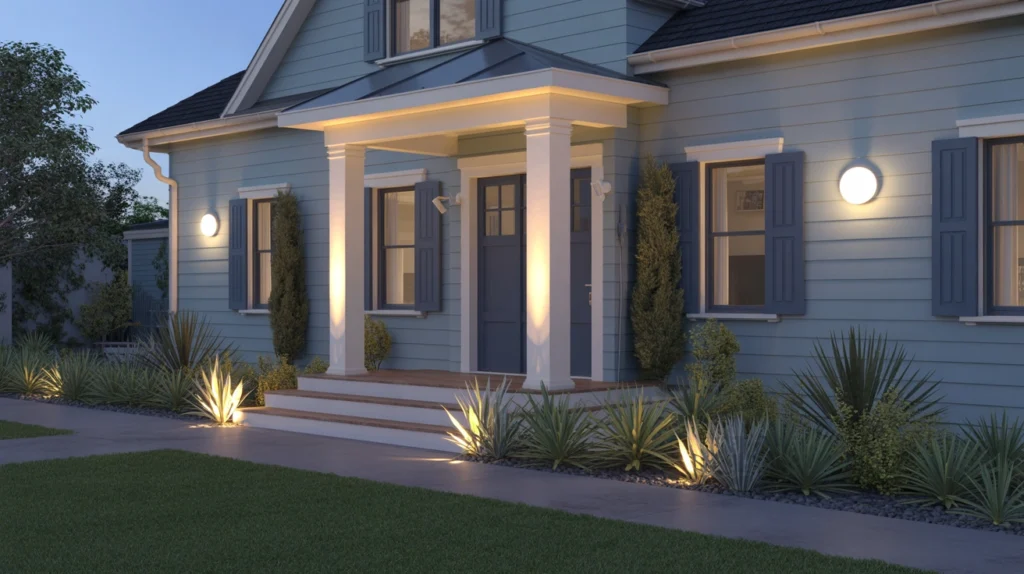
Installation Tips
- Solar Fixtures: Stake or mount in south-facing, sunny areas; ensure 6–8 hours of sunlight.
- Hardwired LEDs/Smart Lights: Turn off power, use a voltage tester, and consider an electrician for junction boxes ($100–$300/fixture).
- Smart Setup: Connect via Wi-Fi or Zigbee (e.g., Hue Bridge, ~$60); test automations.
- Seal Connections: Apply weatherproof caulk to prevent water damage.
- Check Codes: Verify HOA or local regulations for outdoor lighting.
Maintenance Tips
- Clean Regularly: Wipe lenses and solar panels monthly to maintain brightness.
- Inspect Wiring: Check hardwired connections yearly for corrosion.
- Replace Components: Swap LED bulbs every 10–20 years; solar batteries every 2–5 years.
- Update Firmware: Keep smart light apps updated for efficiency.
- Warranties: Use Kichler (5 years), Philips Hue (2 years), Amazon Basics (1 year), Leonlite (3 years).
Where to Buy
- Amazon: Budget-friendly solar, LED, and smart lights like Amazon Basics, Linkind, and Philips Hue.
- Home Depot: Stocks Kichler, Hinkley, Leonlite, and Hampton Bay.
- Wayfair: Stylish modern or coastal fixtures with free shipping over $35.
- Manufacturer Sites: Direct purchases for warranties or bundles.
Customer Insights
- Emily T., Seattle, WA: “LED cylinder lights save energy and make our gray house pop!”
- Lisa M., Wilmington, NC: “Solar spotlights cost nothing and light our sage green path!”
- Sarah M., Raleigh, NC: “Smart dusk-to-dawn lanterns cut our bill on our light blue porch!”
- Claire W., Denver, CO: “Motion floodlights save power and secure our white exterior!”
Conclusion
Choose energy-efficient exterior light fixtures by prioritizing LED or solar technology, smart controls, durable materials, and appropriate light output. Look for Energy Star certification, IP65/IP66 ratings, and rebates to maximize savings (~$50–$200/year for 10 fixtures). Select fixtures like Philips Hue, Kichler, or Amazon Basics from Amazon, Home Depot, or Wayfair to complement light blue, gray, or white exteriors. Follow installation and maintenance tips for longevity, and share your energy-efficient lighting projects on Pinterest or Houzz to inspire others while illuminating your dream home sustainably!

